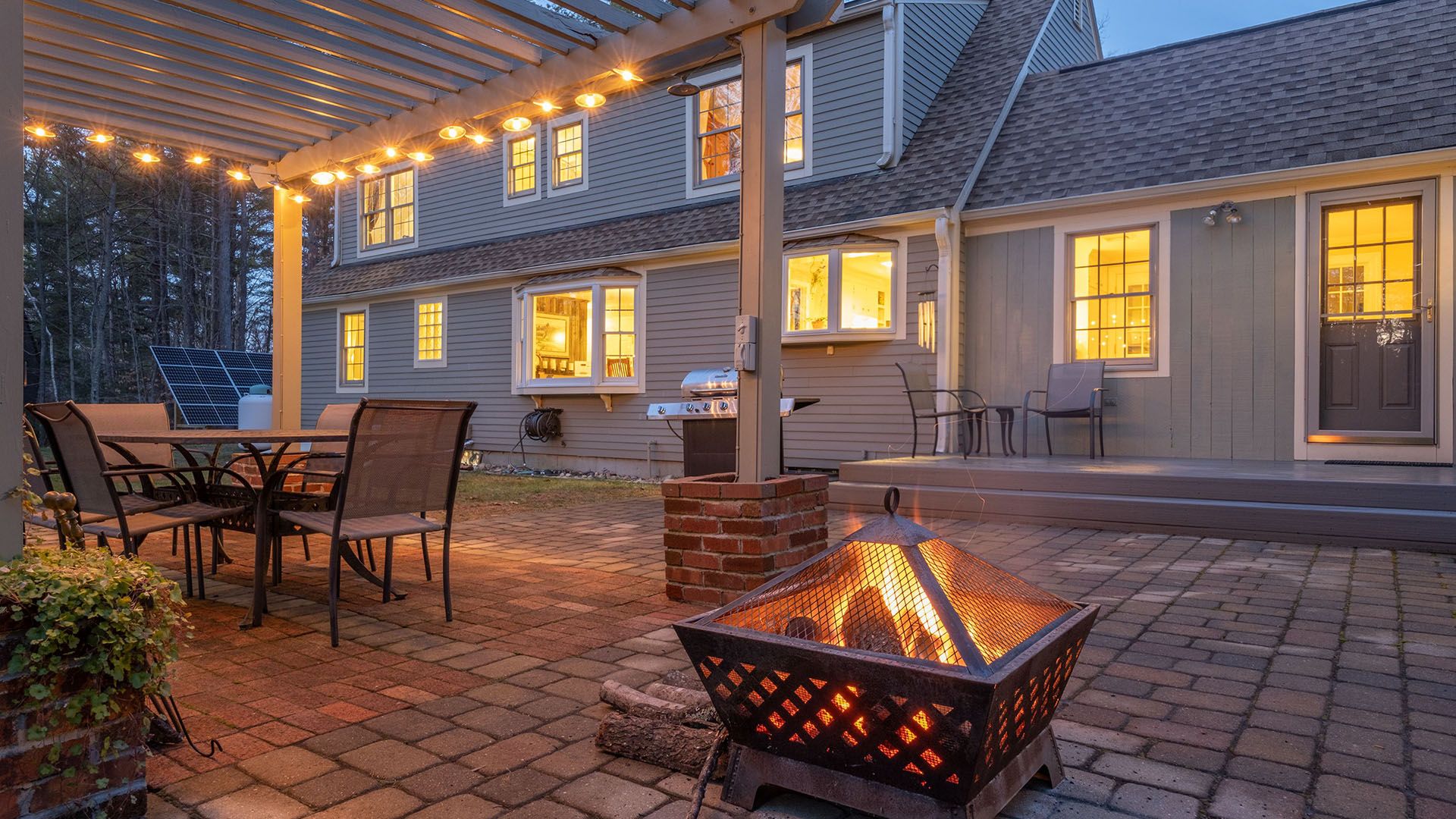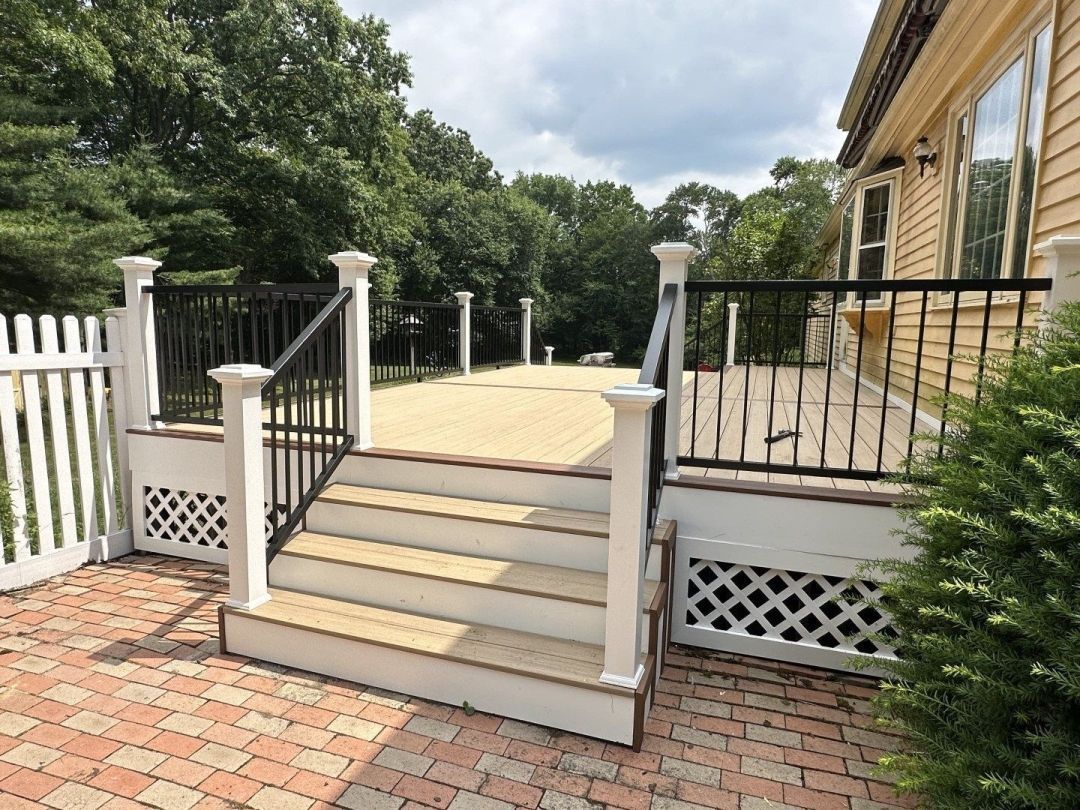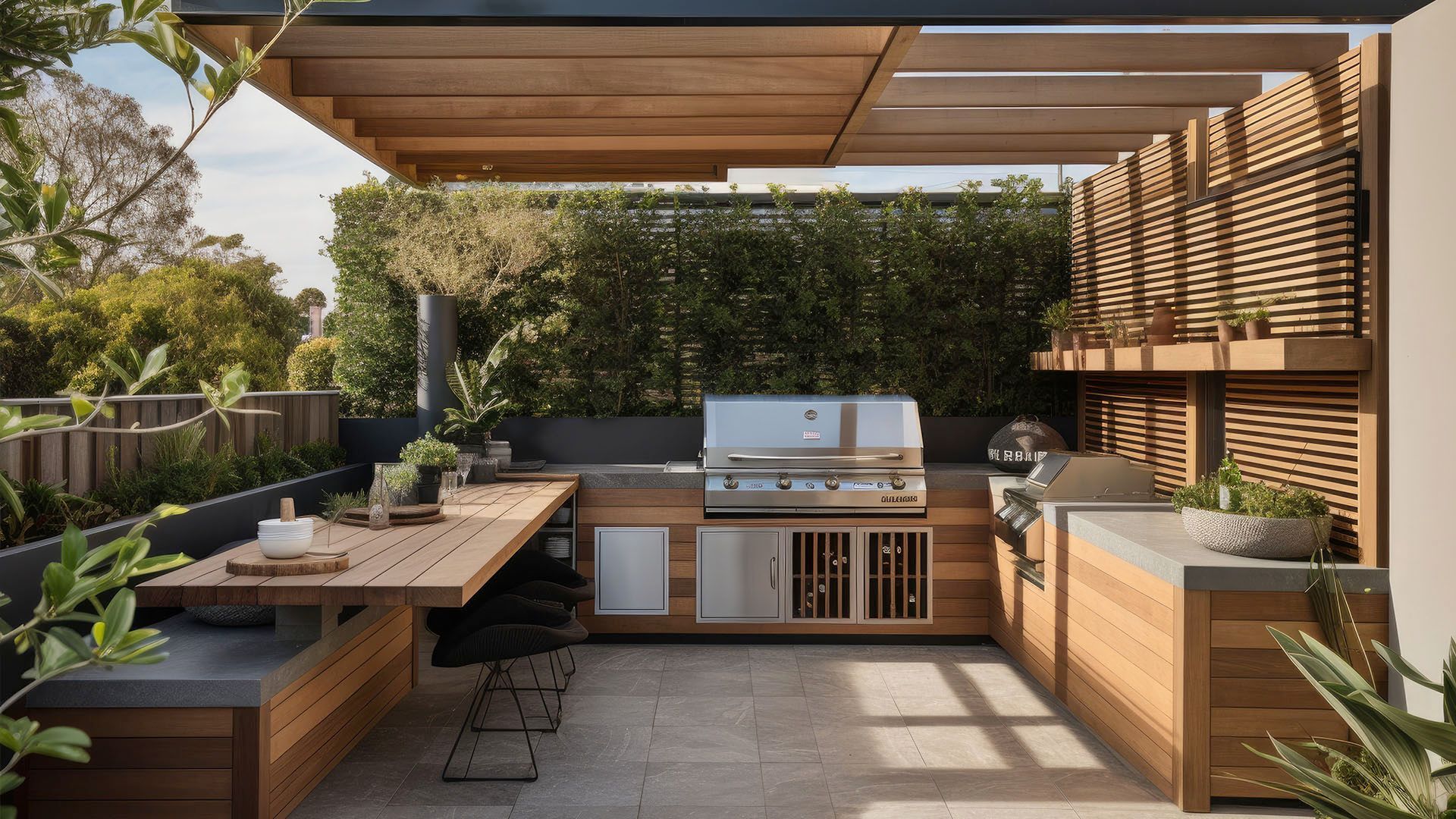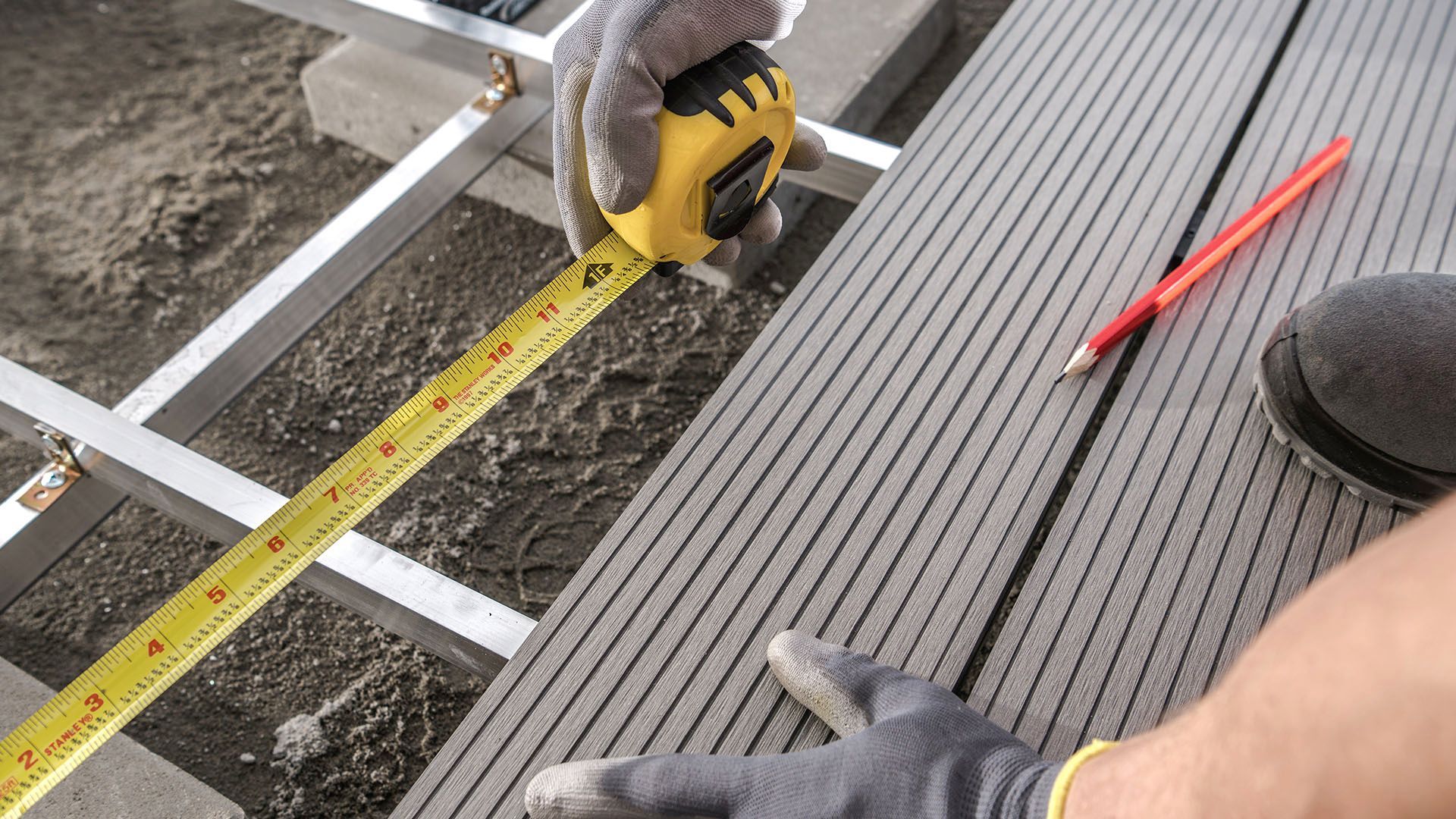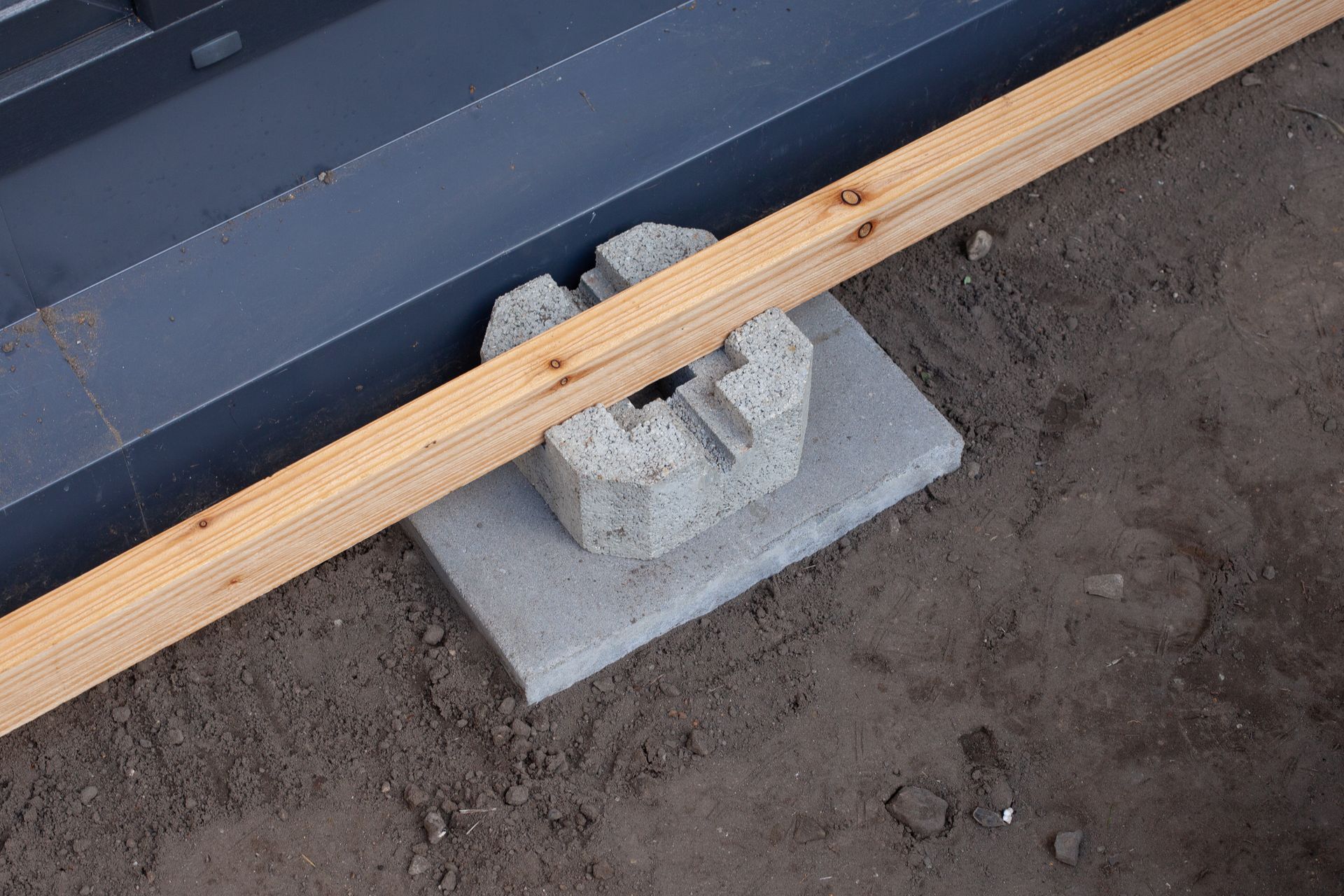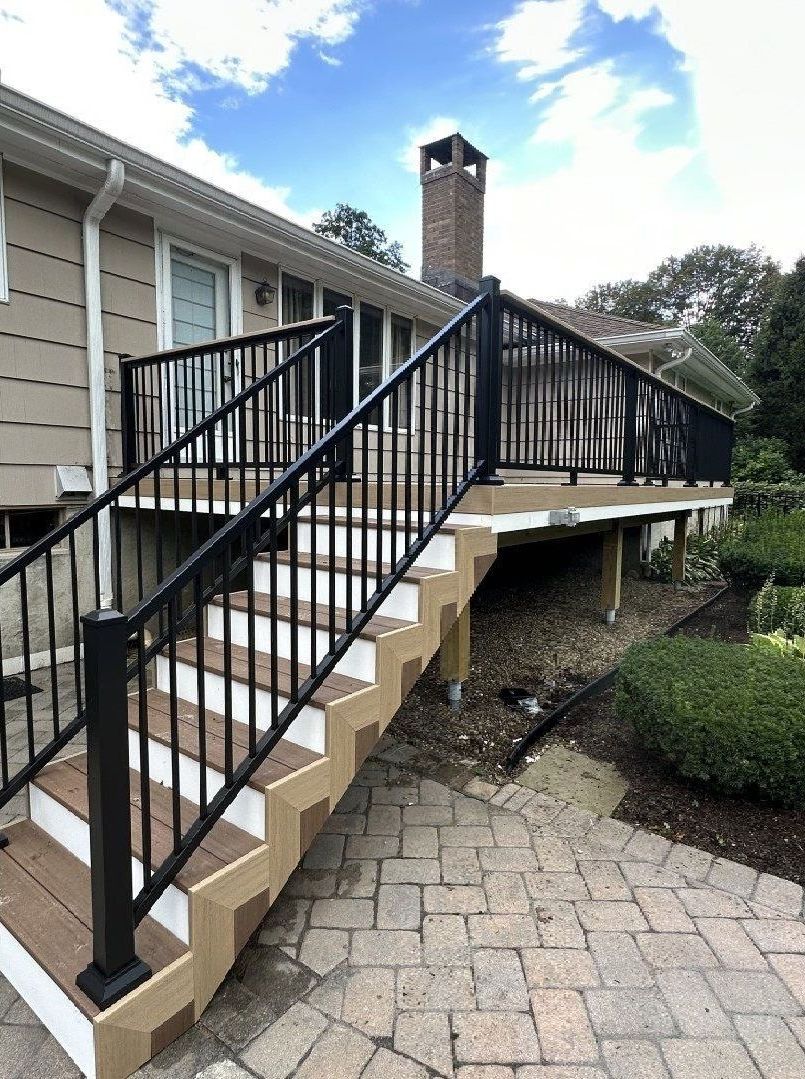Composite vs. PVC Decking: What’s the Difference?
Most homeowners know they want a low-maintenance deck—but which material is best? With composite and PVC decking both offering attractive, long-lasting alternatives to traditional wood, it can be tough to choose between them.
In this guide, we’ll break down what makes composite and PVC decking different, their pros and cons, and which one might be the better choice for your home and budget.
What Is Composite Decking?
Composite decking is made from a blend of wood fibers (like sawdust or wood chips) and plastic. These materials are combined under high heat and pressure, then molded into boards that look and feel like natural wood.
The result is a strong, low-maintenance deck board that resists rot, splintering, and fading over time. Composite decking comes in a wide range of colors, finishes, and grain patterns, making it a popular choice for homeowners who want the look of wood without the upkeep.
Common composite brands include:
- TimberTech EDGE
- Trex
- Fiberon
What Is PVC Decking?
PVC decking (polyvinyl chloride) is made from 100% plastic—no wood content at all. It’s fully synthetic, which makes it even more resistant to moisture, mildew, and insects compared to composite.
PVC boards are lightweight, scratch-resistant, and can be heat-bent for curved deck designs. They often come in high-end finishes that mimic exotic woods and offer excellent color retention.
Popular PVC decking brands include:
- TimberTech AZEK
- TIVADEK
- Wolf Serenity Decking
Key Differences Between Composite and PVC Decking
Here’s a quick look at the major differences before we dive deeper:
| Feature | Composite Decking | PVC Decking |
|---|---|---|
| Material | Wood + Plastic Blend | 100% Plastic (PVC) |
| Moisture Resistance | High | Highest |
| Appearance | Realistic wood grain | High-end, modern finishes |
| Maintenance | Very Low | Extremely Low |
| Heat Retention | Warmer underfoo | Cooler in the sun |
| Cost | $$ | $$$ |
| Sustainability | Often includes recycled content | Less eco-friendly |
Material Composition
Composite decking is made from a combination of wood and recycled plastic. The wood content gives it a more natural texture and feel. PVC, on the other hand, contains no wood—it’s made entirely from synthetic polyvinyl chloride, making it extremely resistant to moisture and insects.
Appearance & Design Options
Both composite and PVC decking come in a variety of colors and textures, with many designed to mimic real wood. Composite often has a more traditional wood look, while PVC decking can offer sleek, modern aesthetics and even more vibrant color options.
PVC also has a major edge when it comes to heat bending, which allows for curved borders and unique design features not possible with composite.
Durability & Weather Resistance
Both materials are highly durable and much more weather-resistant than traditional wood. However, PVC wins when it comes to moisture: because there’s no organic material, it won’t rot, warp, or develop mold.
That said, composite has come a long way and now offers capped options that are also very resistant to mold, stains, and fading.
Maintenance Requirements
Neither composite nor PVC needs painting, staining, or sealing. Simply wash your deck once or twice a year with a hose or gentle power wash.
PVC is virtually maintenance-free, while composite may require slightly more attention over time to remove debris from the surface or between boards.
Heat Retention
If your deck gets a lot of direct sun, this is a key consideration. Composite decking tends to retain more heat and can feel hot underfoot during peak summer days.
PVC decking, particularly lighter colors, stays cooler and more comfortable to walk on barefoot.
Cost Comparison
Composite decking is typically more affordable than PVC, but still a significant upgrade from pressure-treated wood. Expect to pay around $40–$60 per square foot installed for composite, while PVC ranges from $50–$70+ per square foot.
PVC is often seen as a luxury upgrade due to its durability and design flexibility. While it has a higher upfront cost, it may offer greater long-term value thanks to lower maintenance and longer lifespan.
Sustainability
Many composite decking boards are made with recycled plastic and reclaimed wood, making them a more sustainable option. PVC is fully synthetic and typically not recycled, which may be a consideration for eco-conscious homeowners.
Which Is Right for Your Deck?
The right material depends on your needs, style preferences, and budget.
Choose composite decking if:
- You want a traditional wood look
- You're budget-conscious but still want low maintenance
- Sustainability is important to you
Choose PVC decking if:
- You live in a high-moisture area or near water
- You want the lowest possible maintenance
- You're aiming for a high-end, customized deck with curved edges or sleek finishes
Still unsure? A professional can help you evaluate your space and recommend the best material for your goals.
Work with a Decking Expert in Connecticut
At Outdoor Space Builders, we specialize in designing and building custom composite and PVC decks for homeowners across Connecticut. From simple layouts to complex, multi-level structures with curved borders and lighting, we bring your vision to life with in-house craftsmanship and premium materials.
We don’t cut corners—we build outdoor spaces that last.
📞 Contact us today for a free consultation and let’s talk about your dream deck.
Conclusion
Composite and PVC decking are both excellent low-maintenance alternatives to wood. Composite offers the warmth and texture of natural wood with a more approachable price tag, while PVC delivers top-tier performance, modern design flexibility, and unmatched moisture resistance.
No matter which option you choose, working with a trusted deck builder ensures you get the best value, durability, and design for your investment.
Let Outdoor Space Builders help you choose the right material for your perfect outdoor retreat.
Frequently Asked Questions
Which is better, composite decking or PVC decking?
It depends on your priorities. PVC decking is better for high-moisture environments and offers greater resistance to mold and mildew. Composite decking is often more budget-friendly and offers a more natural wood-like appearance. Both are durable and low-maintenance.
Is PVC more expensive than composite?
Yes, PVC decking is generally more expensive than composite decking. On average, PVC can cost $50–$70+ per square foot installed, while composite typically ranges from $40–$60 per square foot. The higher price reflects PVC’s enhanced moisture resistance and design flexibility.
What is the downside of PVC decking?
While PVC decking is extremely durable and moisture-resistant, its downsides include a higher cost, a more synthetic feel underfoot, and less sustainability due to its 100% plastic composition. It also tends to have a smaller range of wood-like textures compared to composite.
Is Trex decking PVC or composite?
Trex decking is composite, not PVC. It's made from a mix of recycled wood fibers and plastic, offering the look of wood with improved durability and less maintenance.

